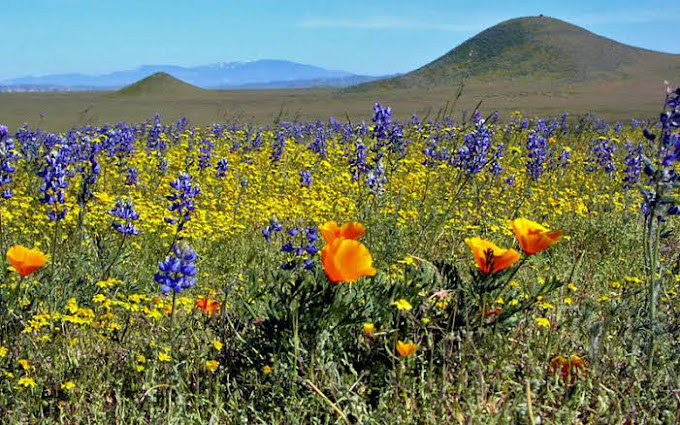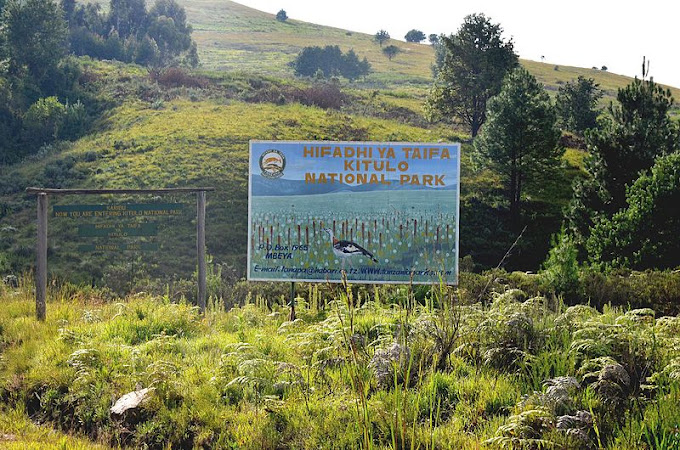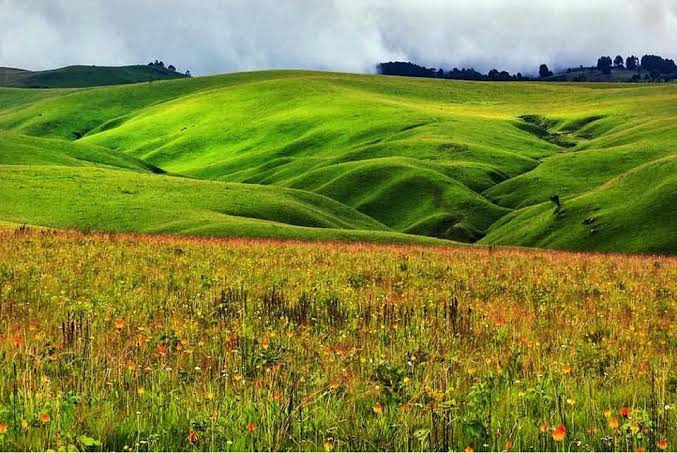Kitulo National Park
Discover the breathtaking beauty of Kitulo National Park, known as the “Garden of God”. Explore the diverse array of flowers and unique landscapes in this hidden gem of Tanzania.
Welcome to Kitulo National Park
Famously known as the God’s Garden, Kitulo National Park is known and called by Botanists as Serengeti of Flowers. Its local name is Bustani ya Mungu –Garden of God. And the new Kitulo National Park is indeed a true botanical marvel, host to one of the great floral spectacles of the world. Here a full 350 vascular plant species including 45 varieties of terrestrial orchid, erupt into a riotous wildflower display of breathtaking scale and diversity during the rainy season.
The history of the park goes back to 1870, when Fredrick Elton, an Explorer visited the area. In 1960’s a large area was taken by United Nations Food and Agriculture Organization for Wheat and Sheep Schemes. Since neither wheat nor sheep thrived in the area, in 1972 the area was turned to a diary farm, which remains active to date.
As a result of concerns from conservation bodies and various stakeholders, part of the farm, Livingstone and Nhumbe Forest Reserves were declared as Kitulo National Park on 16th of September 2005.
Climate
The climate is influenced by altitude, Lake Nyasa and is largely temperate.
The maximum daily temperature varies from 14.5°c to 18°c and minimum ambient temperature ranges from 7°c to 8°c between December and April, and can go as low as 0.5˚c during June to August ,during this period frost occurs.
The average annual rainfall is 1600mm ranging from 1500 – 1700mm. The rain season begins from October to May.
Getting there
The park can be accessed from Mbeya town, which is about 110 Km away via Chimala road and 70 Km via Isyonje road. It is about 90 Km from Songwe Airport. The park can only be reached by road.
By Air: Through Songwe Airport; 90 kms via Isyonje and 125 via Chimala small town to Kitulo.
By Road: Mbeya city-Isyonje- Kitulo is 70 kms: Mbeya city-Chimala-Kitulo is 103 kms: Njombe town-Ikonda-makete-Kitulo 165 kms.
By Railway: Through railway transport Tanzania-Zambia (TAZARA), Iyunga and Makambako stations.
Songwe airport is an airport in the southern highlands region of Tanzania serving the city of Mbeya and the nearby regions. It is able to accommodate commercial jet traffic. The services of domestic flights are provided by Air Tanzania, Precision air, Fast jet and Tropical air
Wildlife & Attractions
These are places of interest inside the park, where tourists can visit, typically for its inherent or exhibited natural or cultural value, historical significance, natural or built beauty, offering leisure, adventure and amusement.
The Park has vast expanses of rolling upland grassland, rounded hills stretching away to the horizon, waterfalls, rivers and crater lake.
- Kitulo Plateau
The plateau is characterized by three main vegetation types:
- Well drained grassland on volcanic soils with species like Aster transaniesis, Kniphofia Grantii and other more.
- Seasonally or permanently in undated bogs with species such as Lobelia and Gladiolus.
- Rocky ridges and associated talus slopes on soil derived from metamorphic rocks with species like Moraea callista and Romulea companuloides.
- Flowers
The park is one of the great flowers gardens of the world with over 40 species of ground orchids alone. Flowers come out in their thousands making unparalleled carpet of color especially from late November to April.
- Physical Features and Vegetation
Kitulo National Park is floristically reached with at least 350 species of vascular plants documented so far from the plateau. Kitulo highlands appear to be a major geographical ground for species typical of Eastern and Southern Africa region and so extremely rich in endemic and rare species not protected elsewhere in Tanzania.
- Mount Livingstone Forest
Some of the tree species in the forest are Hagenia abyssinica, Ocotea usambarensis, Juniperus procera, and Khaya anthoceca. The forest is also characterised by mountain Bamboo, (Sinarundinaria alpina). Kitulo is rich in flora species with 350 species of high plants recorded, including 45 species terrestrial Orchids, of which 31 species are endemic to Tanzania, 16 are endemic to Kitulo and Poroto Mountain sand at least 3 species are endemic to Kitulo national park. Two species are only known to be in Kitulo and adjoining forest. The abundance of plants in the wet season has been described as the greatest flora marvel of the World.
- Nhumbe Valley
This is often referred as the jewel of the Park, where small streams emerge from the grassy hill sides sometimes cascading down in little waterfalls, thus forming the head waterfall for Nhumbe river, one of the main tributary of the Great Ruaha River. The gap of the valley is occupied by Juniper forest, one of the most extensive in East Africa. They tower to 50 m high and are indeed the tallest junipers in the world.
- Nhumbe Waterfall
Its height is approximately 100 meter. The waterfall is 20 km from Mwakipembo main gate and takes one hour to walking down the waterfall and up to the picnic site. You can cool your body there and take brilliant photos.
- Mwakipembo Waterfall
It is located along the road to Nhumbe valley 4 km from mwakipembo main gate, its height is 8 meters. The area is characterized by orchid flowers, everlasting flowers, Erica plants and Clematopsis uhehensis.
- Cultural Attractions
Mlivili cave is located along Matamba Ridge after Mwakipembo water fall and Usalama cave is about 8 kilometers away from Common works Junction, the road to Mbeya via Isyonje. During those days of intertribal war, the caves were used as the hiding point by indigenous people from Wawanji, Wakinga and Nyakyusa from Mwakaleli. Now days, these area are used as poachers hides.
- Birds
Kitulo National Park is an important bird area (IBA) with wintering site for various bird species from South Africa and Europe. Some species from North Africa, Abdim’s stock in particular use Kitulo as a wintering area. The plateau is also a home of breeding colonies of Blue swallow and Denham’s bustard. Other endemic bird’s species includes: Lesser kestrel, Pallid Harrier, Cisticola njombe, Kipengere Seedeater and Uhehe fiscal. A number of waterbirds can be found at Dhambwe Crater Lake. These are: Yellow billed-duck, White-faced whistling ducks, Common teal, Open-billed stocks and Red knobbed coot.
- Attractions Outside the Park
These are places of interest which are outside the park, where tourists can visit, typically for its inherent or exhibited natural or cultural value, historical significance, natural or built beauty, offering leisure, adventure and amusement.
Activities
The park is endowed with various tourism activities that visitors can do during their visit. The activities includes;Hiking, Nature Walking Safaris (Short Walking Safaris (SWS)), Long Walking Safaris (LWS), Picnicking, Bird Viewing, Camping, Filming, and Cycling (MB).
Take one of our many walking trails that we have customized so that you can explore our park and nature along nhumbe forest with good habitat for over 50 meter trees, black and white colobus monkey, waterfalls. On mount Livingstone ranges and grassland plain there are very interesting trails for flowers, hikers and forest lovers.
Nhumbe walking trail (1 – 3hrs)
Matamba ridge ( 4 – 10hrs walk)
Kipunji hiking trail with takes (8 -12hrs)
Kilasi hiking trail takes (3 – 6hrs)
Bamboo hiking trail takes (3 – 6hrs)
Ikubo hiking trail takes (3 – 6hrs)
Also there is a Trail from Ipelele to Matema Beach- Lake Nyasa that take you couple of days.
- Game viewing
Explore game drive along Matamba ridge, montane grassland, bamboo forest and Mt.Livingstone trees, waterfalls and around nature flower garden. Four wheel (4X4) drive vehicles are recommended.
- Nhumbe trail (Short walking safari)
The safari starts from nhumbe picnic site, then descends to waterfall base through very steep built steps and ascend back to picnic site, takes two hours (2hrs) walking.
- Matamba Ridge (Long walking safari)
The safari starts from mwakipembo campsite, then hikes to matamba ridge and descends to mlivili cave, it takes six hours (6hrs) walking. Walking to matamba ridge route gives nice scenery vision to grassland plains and horizons.


